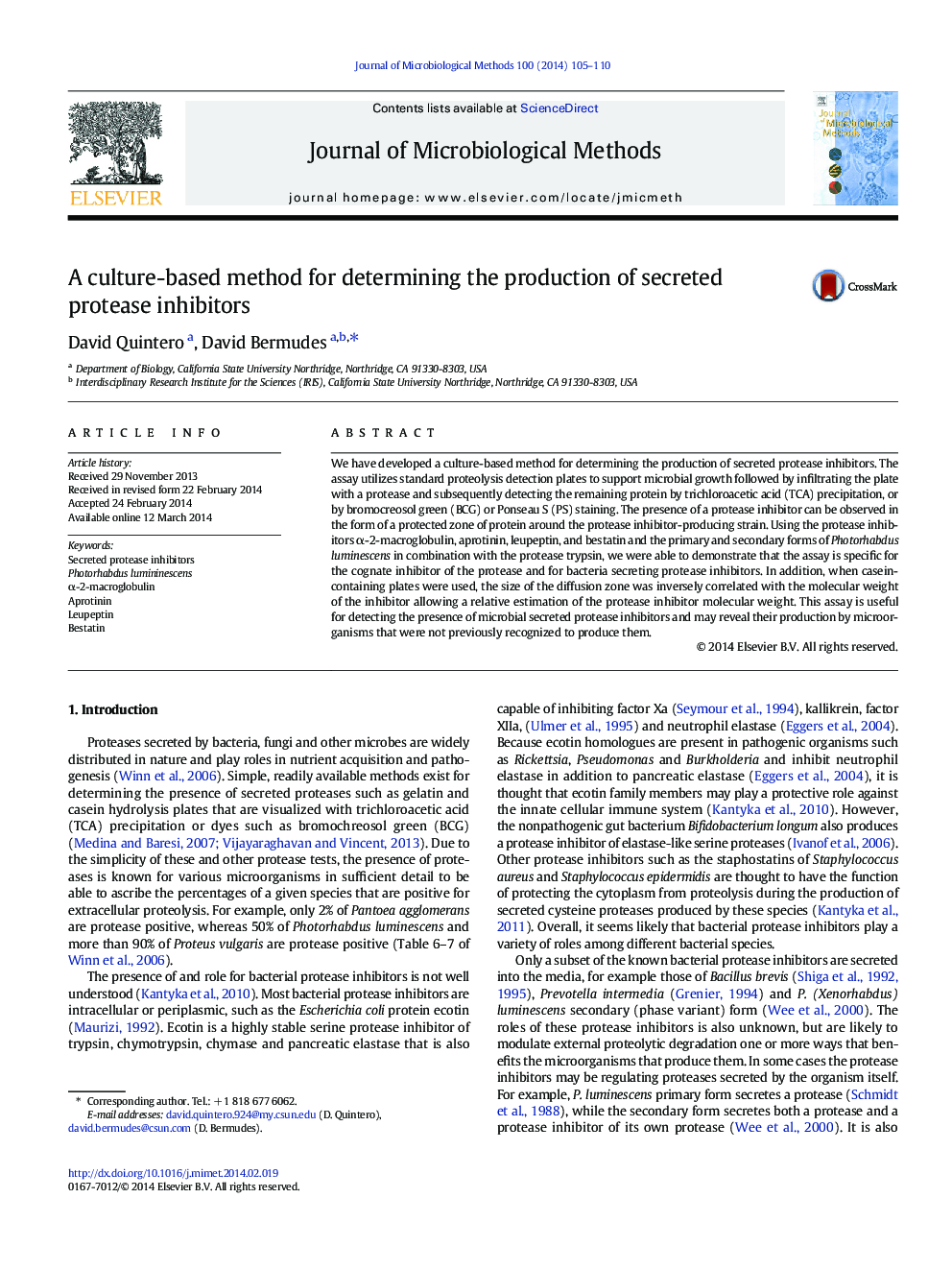| Article ID | Journal | Published Year | Pages | File Type |
|---|---|---|---|---|
| 8422329 | Journal of Microbiological Methods | 2014 | 6 Pages |
Abstract
We have developed a culture-based method for determining the production of secreted protease inhibitors. The assay utilizes standard proteolysis detection plates to support microbial growth followed by infiltrating the plate with a protease and subsequently detecting the remaining protein by trichloroacetic acid (TCA) precipitation, or by bromocreosol green (BCG) or Ponseau S (PS) staining. The presence of a protease inhibitor can be observed in the form of a protected zone of protein around the protease inhibitor-producing strain. Using the protease inhibitors α-2-macroglobulin, aprotinin, leupeptin, and bestatin and the primary and secondary forms of Photorhabdus luminescens in combination with the protease trypsin, we were able to demonstrate that the assay is specific for the cognate inhibitor of the protease and for bacteria secreting protease inhibitors. In addition, when casein-containing plates were used, the size of the diffusion zone was inversely correlated with the molecular weight of the inhibitor allowing a relative estimation of the protease inhibitor molecular weight. This assay is useful for detecting the presence of microbial secreted protease inhibitors and may reveal their production by microorganisms that were not previously recognized to produce them.
Related Topics
Life Sciences
Biochemistry, Genetics and Molecular Biology
Biotechnology
Authors
David Quintero, David Bermudes,
